Devon Eastland on Caroline Schimmel & the Challenges of Creating Diverse Collections Driven by Women
Ahead of Swann’s first auction dedicated to the accomplishments of women on July 15, senior specialist and curator of the sale, Devon Eastland, sat down with author, historian and collector Caroline Schimmel to discuss the challenges of diversifying Americana and rare book collections, as well as the offerings of those who deal in the trade, with stories outside of the male narrative.
Just after Caroline Schimmel and I firmed up our appointment for this interview, she sent an email that said, “I just voted FOR you at the AAS [American Antqiquarian Society] meeting.” A lovely note, I thanked her when we met. Caroline said wryly, “I said I voted at that meeting, I didn’t say I voted for you,” and I apologized for my presumption!
Schimmel is a hoot. But I’m not exposing any deep, dark secrets here. Caroline Schimmel has been active and present in the book world since I was trying to figure out my algebra homework. She has worked around books at every level, as a cataloger, editor, in book collecting societies, scholarly circles, and most prominently as a collector and buyer of rare books. So, the fact that she peppers conversation with phrases like “my starter husband” and punctuates anecdotes with asides such as, “which was why I got fired,” will come as no surprise to anyone who’s had the pleasure of meeting her.
Schimmel is not interested in making herself tame and palatable, a spirit she shares with the women whose works she has sought out and stories she has collected and retold throughout her adventures acquiring books, art, manuscripts, and ephemera.
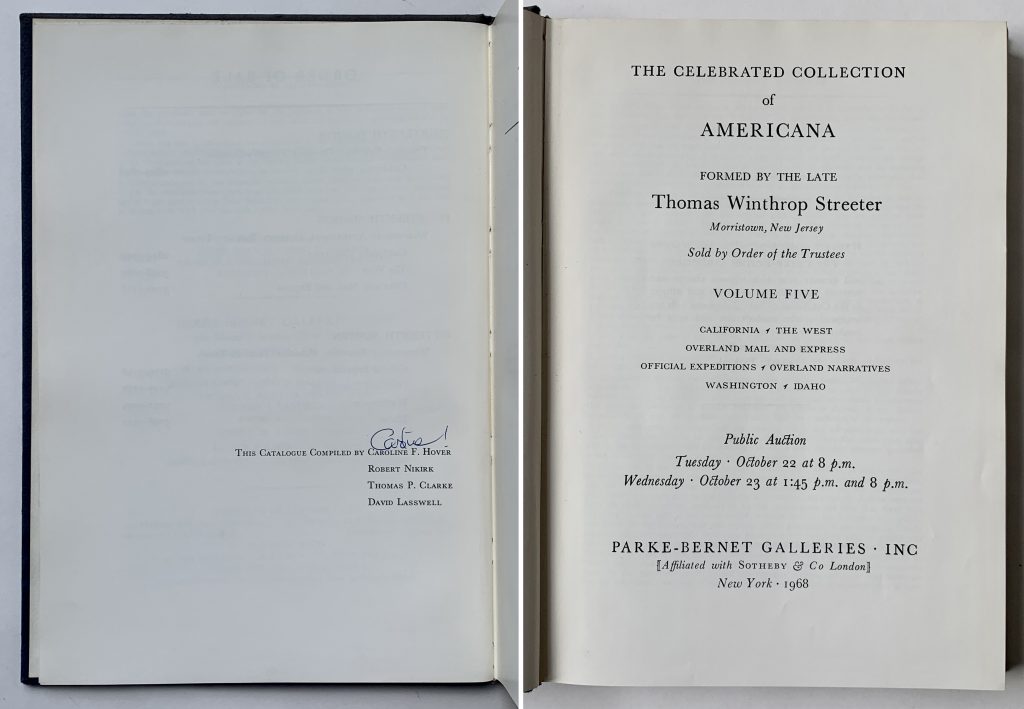
While cataloging the Streeter sale, (The Celebrated Collection of Americana Formed by the Late Thomas Winthrop Streeter, a famous series of auctions conducted by Parke-Bernet Galleries in New York between 1966 and 1970, the catalogue was published in eight volumes and featured the best in Americana), Schimmel noticed there were almost no women writers included in the collection, and that many of those included were the authors of what some might called (by some) dry town histories. This did not seem quite right. “Hmm, I guess there were no women in the west,” she mused, “and then I re-thought and thought, that doesn’t make much sense, how does the next generation happen, and where does all this child labor come from?” Inspired by the idea of this unseen group of female American pioneers, and with the moral support of her collector-husband Stuart, Schimmel decided that she could build a collection on it.
The hunt began. As she visited bookstores and asked where she could find women’s books, she was often told, “We don’t have any.” Returning to the front counter with an armload or two soon persuaded some of the larger secondhand shops to create their own sections; maybe someone else would be interested. Although a movement in this direction might seem positive, we book hounds would prefer to keep our precious knowledge private. The ability to buy something valuable on the cheap is a key feature to the entire endeavor. Being rewarded for book knowledge is an essential part of the hunt, and for Schimmel, like many other seekers, uncovering something special that no one else has noticed is everything.
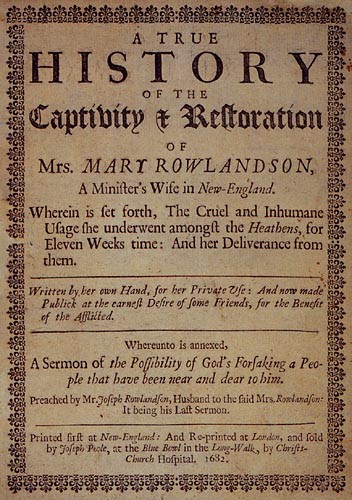
Image Courtesy of the Special Collections of the University of Pennsylvania Library.
Our talk turned to captivity narratives, which really begin with Mary Rowlandson. Rowlandson lived in Massachusetts in 1676. Her entire town was destroyed by a party of Narragansett Indians, who killed the majority of the town’s residents, and burned its buildings to the ground. Rowlandson was kidnapped, still clinging to her murdered infant. After about eleven weeks of captivity with the Native Americans, and a walk up to Canada and back, Rowlandson was repatriated to her people. This is all very dramatic and interesting on a number of cultural levels to historians and scholars but it’s a whole other ballgame for book collectors. An account of Rowlandson’s sufferings, purportedly in her own words, was published in Massachusetts Bay in 1682. In fact, four editions were published that year in Cambridge, Boston, and even overseas in London. The book has been a much sought-after and desired object in early editions since about 1683. And so, our talk turned to Rowlandson because her captivity narrative could be considered the fundamental starting point to a collection based on women in the wilderness. But remember, Schimmel is a hoot.
When she first started collecting, Schimmel couldn’t afford the steep prices dealers were asking for Rowlandson’s book. Moreover, the story itself is problematic in other ways for larger reasons. Did Rowlandson really write her own story (some believe Cotton Mather was involved) and if not, what patriarchal tropes have been inserted in the process? Next, how much interest in captivity narratives is inspired by a similar desire from the male point of view to capture women and subject them to unspeakable treatment? Or, what of infantilizing women in the classic damsel rescue fantasy?
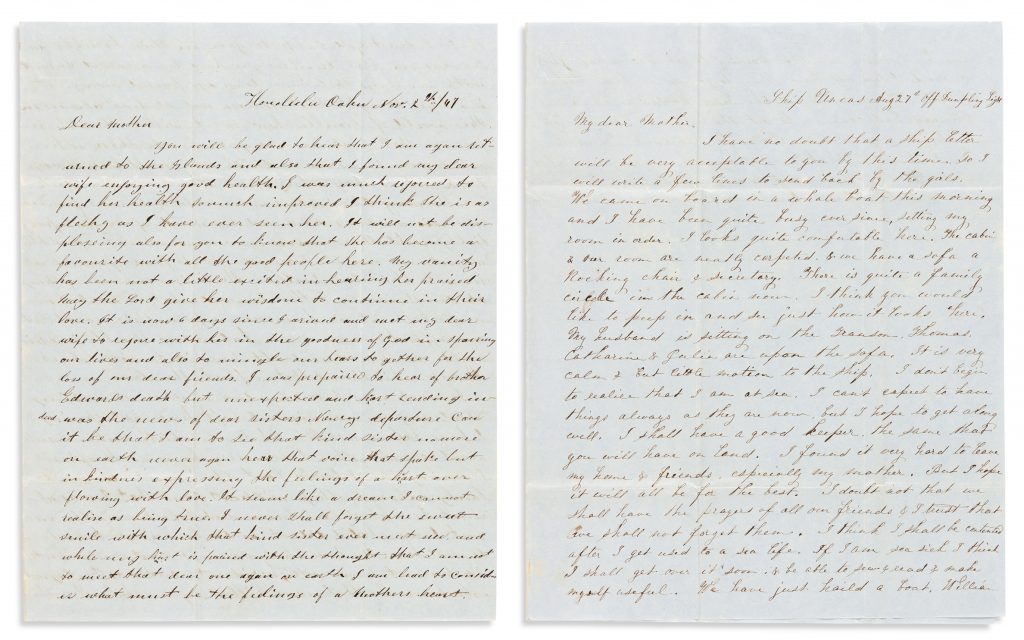
In short, the act of collecting authentic women’s stories requires something more than the average take on obvious high-spots and sticking to canonical narratives rigidly defining women’s roles and contributions. The collector of women’s stories is seeking different iterations of adapted survival tactics adopted by women over time to create a space for themselves when society had nothing available.
And so, dear reader, you are invited to embrace these stories, and do your part to enjoy them, repeat them, and help them to find a place in a new historical canon. Take a look at Schimmel’s exhibition catalogue, OK, I’ll Do It Myself! Read through the lot descriptions in the Focus on Women sale and find your own way to own a piece of herstory.
OK, I’ll Do It Myself: Narratives of Intrepid Women in the American Wilderness; Selections from the Caroline F. Schimmel Collection, New York: Caroline F. Schimmel and the University of Pennsylvania, 2017.
Read more from Devon Eastland:
Why do old books use F’s instead of S’s?
As Seen in Books: A Glossary for Items Found in the Pages of Early Printed Books
Do you have material related to historical women we should take a look at?
Learn about how to consign to an auction, and send us a note about your item.
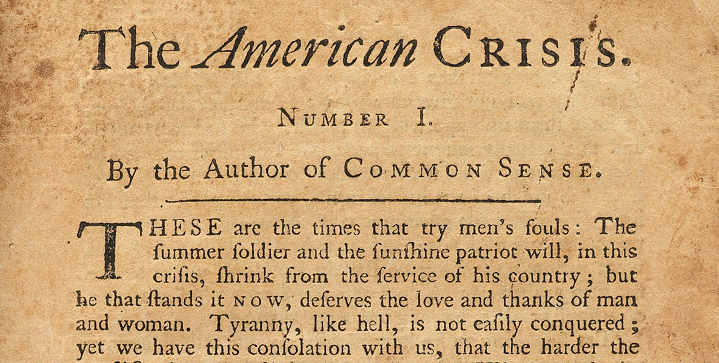
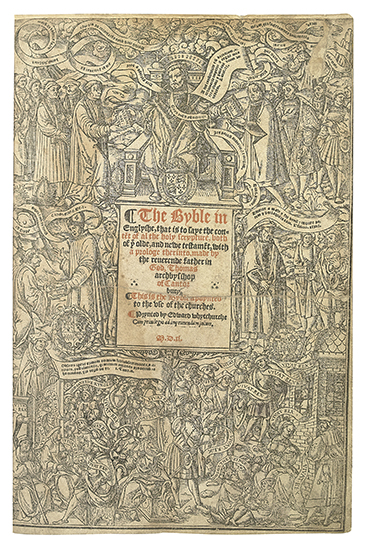
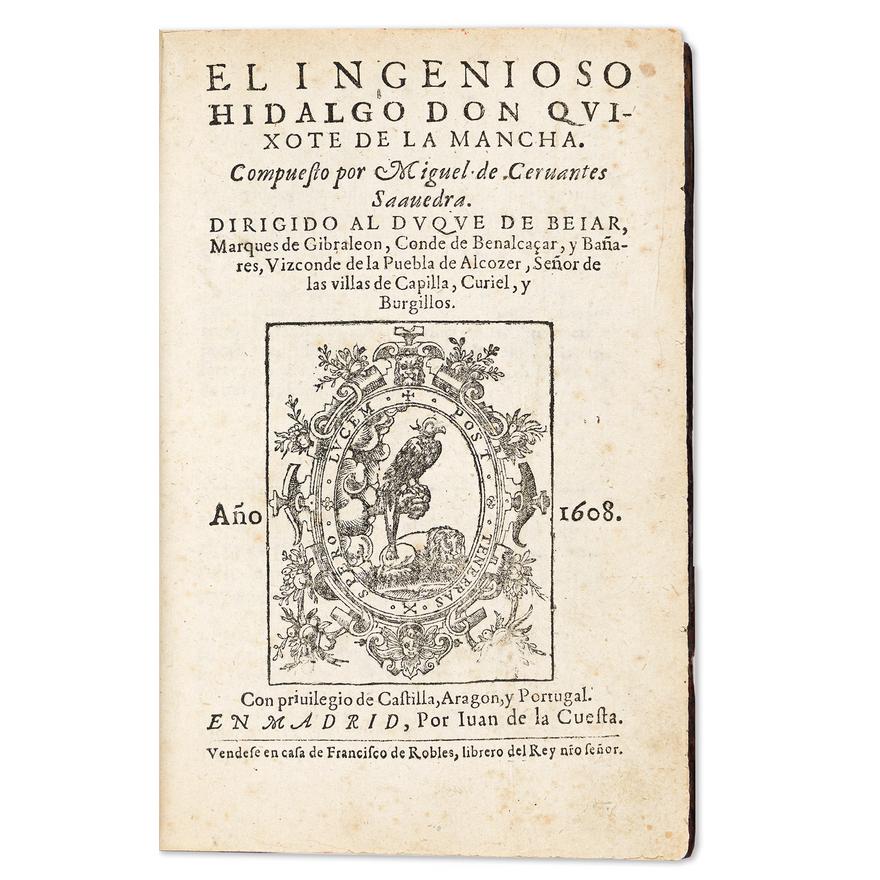





![Grace Meschery-McCormack shares about two copies of Fernando de Rojas’s ‘La Célestine,’ including a limited edition copy illustrated by Pablo Picasso.
At auction April 22. Learn more about the works at the link in our bio.
#Rarebooks #rarebookdealer #antiquarianbooks #auctions
_______________________________________
Music Credit:
Schubert - Piano Quintet in A major ‘The Trout’, D. 667 - IV. Andantino – Allegretto
Music provided by Classical Music Copyright Free on Youtube [https://tinyurl.com/visit-cmcf]
Watch: • Schubert - Piano Quintet in A major ‘...]](https://scontent-iad3-1.cdninstagram.com/v/t51.75761-15/491443494_18499096345036585_5935932878956098058_n.jpg?stp=dst-jpg_e35_tt6&_nc_cat=107&ccb=1-7&_nc_sid=18de74&_nc_ohc=m-4Ir9scQRgQ7kNvwF0EC_d&_nc_oc=Adk6vWHvJMH5TK67zw75jTpjO3KqV6u2qJzpfUwC4bmSaYLGiSmw5xfkUuplusJ5mI8&_nc_zt=23&_nc_ht=scontent-iad3-1.cdninstagram.com&edm=AM6HXa8EAAAA&_nc_gid=4U4CHLYdu78WkdUqz4Xo1w&oh=00_AfG9ug13M8ekS4Det61ZgnIqaeZrxFz_1gIX22cE4pAG-w&oe=6809C351)









